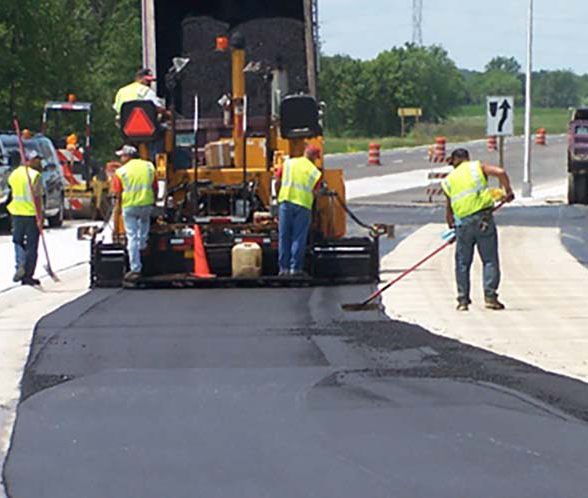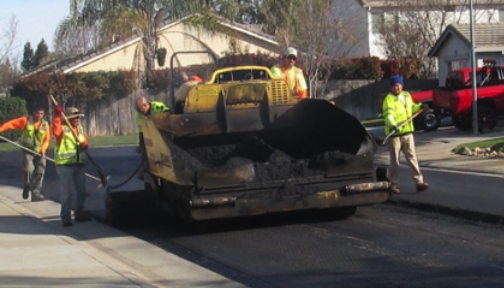Unlocking the Tricks of Warm Mix Asphalt Technology
Exploring the depths of warm mix asphalt innovation uncovers a globe where meticulous procedures and exact formulations merge to shape our roadways and facilities. The fusion of binders, accumulations, and fillers isn't just a construction task yet a calculated orchestration of resilience and performance.
Significance of Hot Mix Asphalt
Warm Mix Asphalt plays a critical function in modern-day infrastructure advancement due to its sturdiness and cost-effectiveness. As one of the most generally utilized leading material for roadways, freeways, and car park, Warm Mix Asphalt provides a series of advantages that add to its value in construction tasks. One crucial benefit is its ability to hold up against hefty traffic tons and extreme weather, providing a trusted and lasting surface for transport networks. In Addition, Warm Mix Asphalt is affordable in both first construction and long-lasting upkeep, making it a recommended choice for numerous facilities jobs.
The longevity of Hot Mix Asphalt stems from its make-up, which consists of aggregates, binder, and filler materials that are very carefully chosen and mixed to fulfill certain performance requirements. On the whole, the value of Hot Mix Asphalt in framework advancement can not be underrated, as it proceeds to be a cornerstone of contemporary construction techniques.
Parts of Asphalt Mixes
The make-up of asphalt blends contains carefully picked aggregates, binder, and filler products that are important for attaining particular performance requirements. Accumulations are the primary part of asphalt mixes, providing stamina and stability. These accumulations can be all-natural, such as gravel or smashed rock, or synthetic, like recycled materials from old sidewalks. The binder, generally bitumen or asphalt cement, holds the accumulations with each other and offers flexibility and resilience to the mix. The option of the binder is essential as it straight affects the mix's performance in different weather. Fillers, such as hydrated lime or Portland cement, are utilized to boost the mix's workability and aging resistance. Angled Parking.
The combination and proportion of these components play a significant role in determining the quality and performance of the asphalt mix. Engineers carefully design the mix to fulfill particular requirements, taking into consideration aspects like traffic quantity, environment problems, and pavement life expectancy. Appropriate choice and balancing of aggregates, binder, and fillers are important for creating durable, resilient asphalt pavements.
Mixing and Manufacturing Strategies

As soon as the accumulations are picked, the binder, often asphalt cement, is included in bind the products with each other. The binder's quality and quantity substantially affect the mix's stamina, versatility, and resistance to environmental factors. In addition, fillers like moisturized lime or Portland cement might be included to improve particular attributes of the asphalt mix, such as its workability or moisture resistance.
Throughout manufacturing, the aggregates and binder are heated, typically in between 250-325 ° F(121-163 ° C ), to assist in mixing and ensure correct finish of the aggregates. The blending process must be thorough to attain a homogeneous mixture that advertises the preferred performance attributes of the asphalt. Different techniques, such as batch blending or drum blending, are utilized to achieve regular and premium asphalt mixes for construction jobs.
Factors Affecting Asphalt Efficiency
Aspects affecting asphalt performance include a variety of variables that influence the resilience, durability, and total quality of asphalt pavements. One essential variable is the quality of products used in the asphalt mix.

Environmental conditions additionally influence asphalt efficiency. Temperature level variations, dampness infiltration, and web traffic loads can all affect the Recommended Site architectural integrity of the pavement. Layout considerations, such as sidewalk density and drainage, are necessary in making sure the long-term performance of the asphalt sidewalk. By carefully thinking about these variables, contractors and engineers can maximize asphalt efficiency and boost the life span of sidewalks.
Sustainable Practices in Asphalt Innovation

Furthermore, the growth of warm-mix asphalt (WMA) innovations has actually gained grip recently. WMA permits the production and positioning of asphalt blends at lower temperatures contrasted to standard hot-mix asphalt, leading to decreased energy usage and greenhouse gas emissions. The use of porous asphalt blends can help alleviate stormwater runoff concerns by enabling water to penetrate with the pavement and right into the ground, advertising natural water filtering and reenergize processes. By executing these lasting practices, the asphalt industry can contribute to building a much more durable and eco friendly framework network.
Verdict
In conclusion, hot mix asphalt innovation plays a critical duty in modern infrastructure growth because of its resilience and cost-effectiveness. By very carefully stabilizing elements, utilizing appropriate mixing methods, and thinking about different elements, engineers can create top quality asphalt mixes that endure heavy traffic loads and harsh weather. Welcoming lasting methods, such as using warm-mix modern technologies and recycled products, additionally improves the environmental kindness of asphalt modern technology.
Blending and production techniques in warm mix asphalt innovation involve the precise mix and processing of accumulations, binder, and fillers to produce a resilient and high-performance click for more info asphalt mix.Variables affecting asphalt performance include a range of variables that influence the toughness, durability, and overall high quality of asphalt pavements. Lasting practices in asphalt technology include various campaigns aimed at lowering the environmental influence of asphalt manufacturing and paving procedures. By incorporating recovered asphalt sidewalk (RAP) and recycled asphalt roof shingles (RAS) right into new asphalt blends, the industry can dramatically decrease the intake of raw materials and power, while also reducing landfill waste.
WMA enables for the production and placement of asphalt mixes at reduced temperatures compared to typical hot-mix asphalt, resulting in decreased power consumption and greenhouse gas discharges.